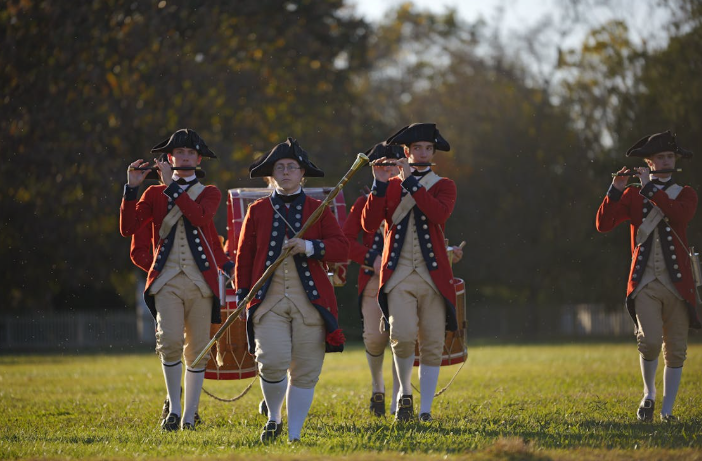York and Lancaster counties are treasure troves of Revolutionary War history, home to key battles, significant figures, and landmarks that shaped America’s independence. These counties offer a deep dive into the Southern Campaign of the Revolutionary War, with sites ranging from battlefields and monuments to preserved homes and cemeteries. Whether you’re a history buff or just curious about America’s past, these local gems deserve a spot on your travel itinerary.
Historic Sites in York County
1. Historic Brattonsville (McConnells, SC)
Step into the 18th century at Historic Brattonsville, a 775-acre living history museum. The site features more than 30 historic buildings, costumed interpreters, and exhibits detailing life during the Revolutionary War. It was the site of the Battle of Huck’s Defeat in 1780, where local Patriots triumphed over Loyalist forces.
2. Kings Mountain National Military Park (Blacksburg, SC)
Although located just outside York County, this site commemorates the October 7, 1780, battle, a crucial Patriot victory in the Southern Campaign. The park features walking trails, a visitor center with exhibits, and memorials to the militia who fought here.
3. Ebenezer Academy and Cemetery (Rock Hill, SC)
Founded in the late 18th century, Ebenezer Academy is one of the oldest educational institutions in the region. Its adjoining cemetery holds graves of Revolutionary War soldiers, making it a reminder of the area’s contributions to the war effort.
4. Fishing Creek Presbyterian Church (Chester, SC)
Located near the York County line, this historic church served as a meeting point for Patriot leaders and soldiers during the war. Its cemetery includes graves of veterans and local leaders who supported the fight for independence.
5. Fort Mill Historic District (Fort Mill, SC)
The Fort Mill area includes several markers and historical sites tied to the Revolutionary War. While primarily known for its Civil War history, the town also played a role in supporting the Patriot cause during the Revolutionary War.
Historic Sites in Lancaster County
6. Andrew Jackson State Park (Lancaster, SC)
This park celebrates the life of Andrew Jackson, the nation’s seventh president, who was born in the Waxhaws region during the Revolutionary War. Visitors can explore a museum, a replica schoolhouse, and exhibits about Jackson’s family and their role in the war.
7. Buford’s Massacre Site (Lancaster, SC)
On May 29, 1780, this site was the scene of the Battle of Waxhaws, a devastating clash where Patriot forces under Colonel Abraham Buford suffered heavy losses to British troops led by Banastre Tarleton. A monument stands to honor the lives lost.
8. Old Waxhaw Presbyterian Church and Cemetery (Lancaster, SC)
This church was a center of activity during the Revolutionary War. Its cemetery contains the graves of both Patriot and Loyalist soldiers, including General William Richardson Davie, a Revolutionary War hero and founder of the University of North Carolina.
9. The Waxhaws Region
The Waxhaws, straddling Lancaster County and neighboring areas, was a hotbed of Revolutionary War activity. Skirmishes, recruitment efforts, and the movement of troops made this area crucial to the war’s Southern Campaign.
Why Visit?
York and Lancaster counties are rich with Revolutionary War history, offering visitors a chance to walk in the footsteps of those who fought for America’s independence. From preserved battlefields to cemeteries and historic buildings, these sites tell the story of resilience and sacrifice.
Sign up for our Sunday Spectator. Delivered to your inbox every Sunday, with all the news from the week.
















